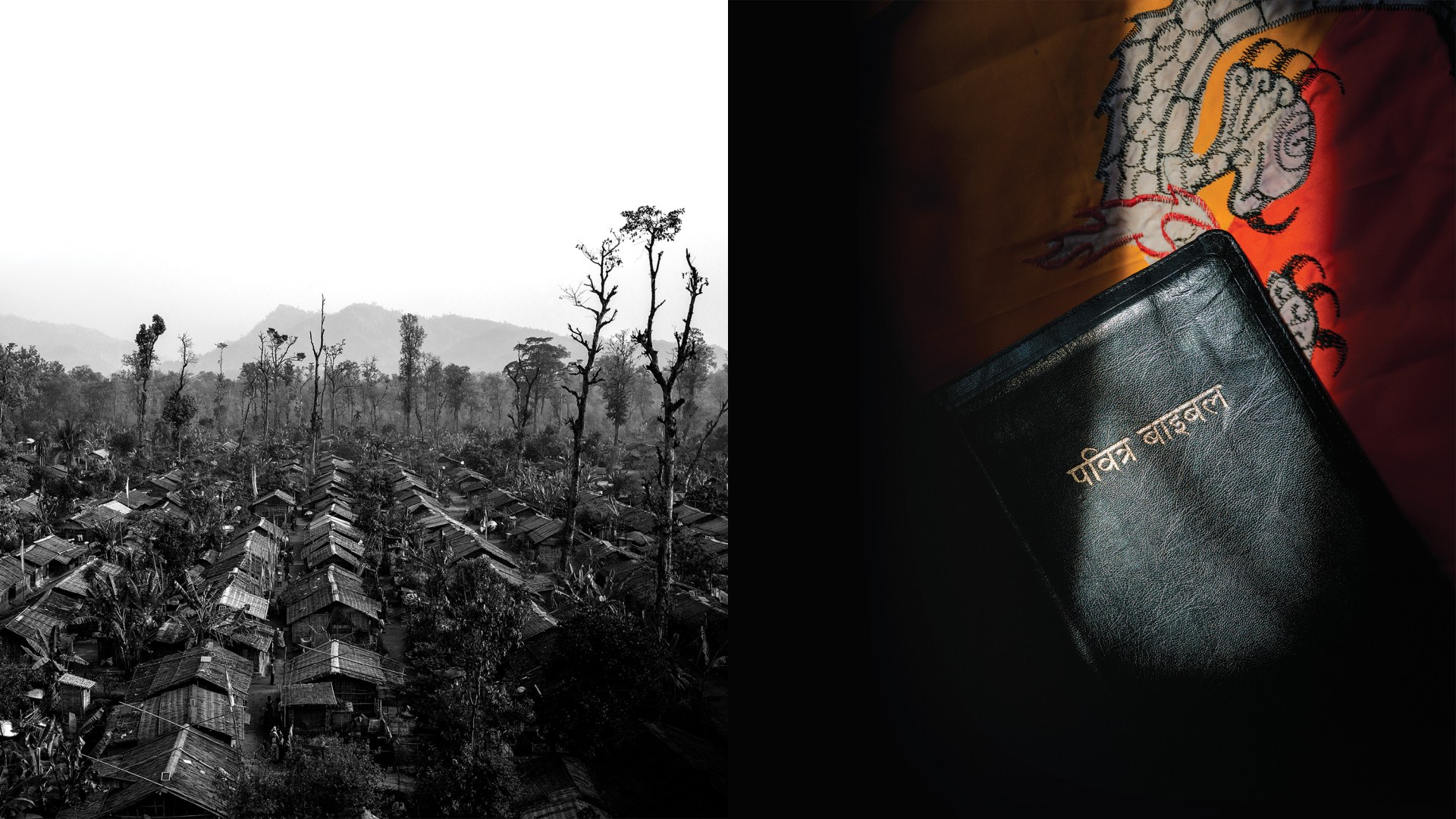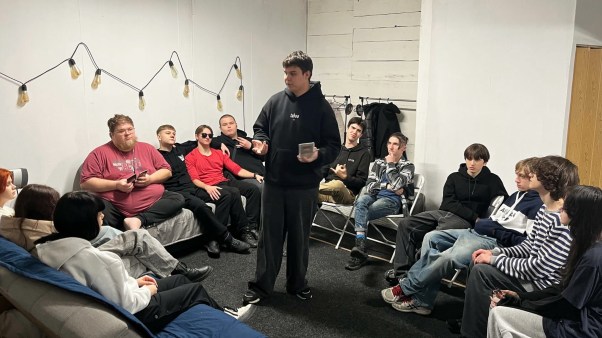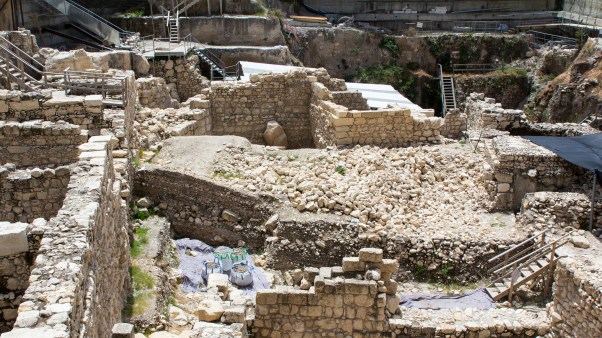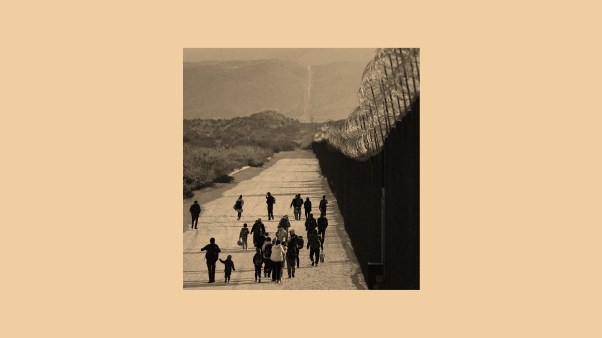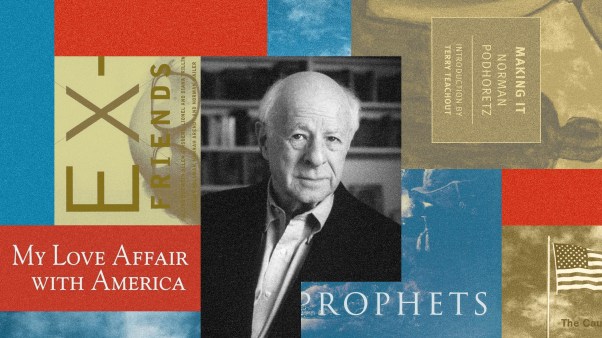Dilli Lumjel remembers the date and time he heard from God and gave his life to Jesus: May 4, 2011, at 1:33 a.m.
Earlier that day, he had performed a Hindu funeral service for his father-in-law in the Beldangi 1 refugee camp in eastern Nepal, where he lived with more than 12,000 other refugees. Both of Lumjel’s parents-in-law had recently converted to Christianity.
As was the custom, Lumjel spent the night at his wife’s uncle’s house. That night he had a vision: His mother-in-law approached him and shared the gospel, stating, “If you enter this house, you have to believe in Jesus.” Then he saw a flash of lightning from heaven and heard a voice saying, “What you are hearing is true; you have to believe.” In the dream, he knelt down crying and committed his life to Jesus.
When he woke up, his face was wet with tears. Lumjel called a local pastor and told him he had had a dream and was now a Christian. The news shocked his family of devout Hindus. “Everybody—my relatives, my wife, sisters—they all woke up asking, ‘What happened to Dilli? Is he mental? He says he’s a Christian!’” Lumjel said.
The next day, the pastor explained the gospel to Lumjel and his wife. The two committed their lives to Jesus. A day later, Lumjel began attending a monthlong Bible school in the refugee camp. After only two weeks of classes, church leaders sent Lumjel out to preach the gospel to other refugees. Several months later, he became a church deacon, then an elder.
One year later, Lumjel arrived in Columbus, Ohio, as part of a massive resettlement of about 96,000 Lhotshampa (ethnic Nepalis expelled from their home of Bhutan) to the United States from 2008 to 2020. There he joined Yusuf Kadariya in pastoring a group of about 35 Bhutanese Nepali families who met each Sunday at a local Baptist church. As more Bhutanese Nepali refugees settled in Columbus and the group brought more people to Christ, the church continued to grow.
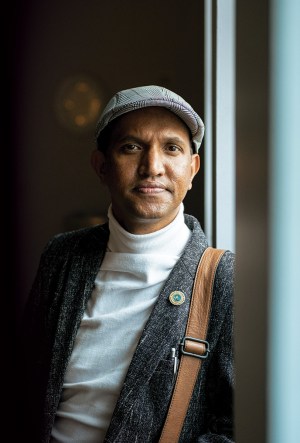 Eli Hiller for Christianity Today
Eli Hiller for Christianity TodayToday, Lumjel is a full-time pastor at Emmanuel Fellowship Church in Columbus. On a wintry Sunday morning in December, about 200 people streamed into the sanctuary, greeting one another with a slight bow and “Jai Masih,” meaning “Victory to Christ.”
Onstage, the youthful music team sang an upbeat Nepali worship song accompanied by guitar, trumpet, Nepali madal drum, and shofar. Congregants, some in colorful dresses and headscarves, were on their feet, waving their hands to the beat and praying aloud. Lumjel preached a sermon about Jesus’ unconditional love for his people.
Lumjel is one of the thousands of Bhutanese Nepali refugees who found faith in Christ while living in refugee camps in Nepal. The conversions of the Lhotshampa, most of whom were Hindu, Buddhist, or animist, would have been unfathomable had Bhutan’s government not expelled them from the country in the 1990s. Yet in the refugee camps, many Lhotshampa found a new life and an eternal home amid their displacement and wandering.
The faith that grew from the fertile soil of suffering helped them navigate a new world as they resettled in the United States. Despite challenges, these refugees planted nearly 300 churches and brought with them a zeal for evangelism that has revitalized existing US churches. According to the US Department of State, about 10,500 Bhutanese Nepali refugees identified as Christian when they settled in the country.
Pastor Bhadra Rai, who compiles data on the group through the Bhutanese Nepalese Churches of America network of congregations, estimates that 60 percent of the Bhutanese Nepali Christians in the US today were converted in the camps, meaning there could now be upwards of 17,500 Bhutanese Nepali Christians in the US.
“God opened the door for the refugees,” Lumjel said. “We were mostly saved there in the camps, and when we came here, others were saved here. … We really like to gospel the people.”
Lumjel grew up in the remote village then called Gopini in the Tsirang district of southern Bhutan, where his family had lived for decades. His grandfather was born in Nepal but moved to Bhutan as the Buddhist kingdom recruited Nepali workers to build roads and farm arable land in the south.
But nine-year-old Lumjel was suddenly uprooted from his idyllic home in 1991 when his father announced, “Let’s go; if we stay here, they will kill us.” Only later did Lumjel understand what had happened. In the 1980s, the Buddhist Bhutanese government became concerned about the growing Hindu Lhotshampa population.
To preserve national harmony, in 1989 the king began a policy that forced Lhotshampa to adopt Bhutanese dress and language and closed Hindu religious schools. Meanwhile, a census was taken, and anyone who could not provide proof of residency prior to 1958 was deemed an illegal immigrant.
Lhotshampa who protested this discrimination were arrested, tortured, and killed. Violence broke out between the ethnic Nepalis and the Bhutanese. Many Lhotshampa say the government forced them to sign documents claiming they voluntarily left the country. In total, about 120,000 Lhotshampa fled the country, with 20,000 settling in India and Nepal and the rest in seven refugee camps in Nepal set up by the UN refugee office in 1991.
Lumjel remembers walking all night through the jungle with his family and taking a long, bumpy truck ride across northeastern India to the refugee camps in eastern Nepal. In the camps, the huts were made from bamboo with plastic coverings to keep out the rain. Paper was pasted onto the walls as insulation from the cold. Families lacked privacy, Rai recalls, as neighbors could hear when couples fought.
Poor sanitation and malnutrition led to the spread of diseases like cholera, and the high density of bamboo homes meant fires spread quickly. These temporary camps became home for the Lhotshampa for the next 20 years as Bhutan refused to repatriate them.
Christianity came to the camps through a small number of Lhotshampa families who had converted while living in Bhutan. They heard the gospel from believers from southern India who taught in schools in Bhutan, said John Monger, one of the early converts who started fellowships, churches, and a Bible school for fellow refugees. Churches in India and Nepal also helped provide guidance and mentorship to the churches in the camps.
Monger was 17 and living in Bhutan when a younger boy told him that Jesus was the true God. Curious, he joined the boy in a secretive Sunday gathering in the jungle with several other Christian families. There he felt the presence of God envelop him, and he accepted Christ.
His conversion brought not only anger from his Buddhist family but also harassment and beatings from the local government. After multiple arrests, he was given the ultimatum of denying his faith or leaving the country. In 1993, he journeyed to the border of India—where he was almost killed by a gang of robbers—before jumping on a truck and joining refugees headed to Nepal.
In the camp, he began sharing the love of Jesus to everyone he met. Through prayer and proclaiming the name of Jesus, Monger told me, he saw the sick healed, the demon-possessed delivered, the depressed and suicidal find hope, and the barren give birth. “The power of God was actively moving, the move of God was so powerful even political leaders or the government couldn’t stop it,” Monger said. “It is just like the Book of Acts.”
He gathered people in his hut and would sing about how every knee shall bow and every tongue confess that Jesus Christ is Lord. “These things were very powerful. When I sing that, people would really kneel and confess Jesus,” Monger remembered. “This is how the gospel was started in the refugee camp: There was no missionary, no denomination, just the simple power of God, the love of God, and the presence of God.”
That was what Bhadra Rai experienced after his family arrived in one of the camps in 1993. Due to the crowded, unsanitary conditions, his younger sister became deathly ill. The camp’s doctor said there was no hope left for her, so Rai’s family turned to the Hindu priest for help, and then to a Buddhist monk. Nothing helped.
Then a young man told Rai’s father that Jesus could save his daughter’s life. Unwilling to leave the gods of his forefathers, Rai’s father refused, but the young man was persistent. “See, your god doesn’t save. If you believe in Jesus, he is the way and can save your daughter,” Rai recalls him saying.
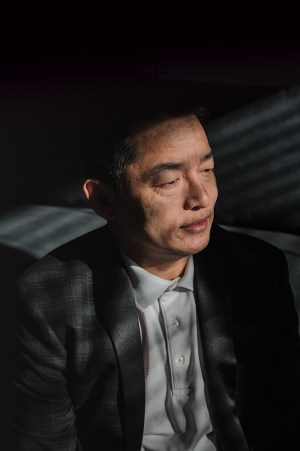 Hannah Yoon for Christianity Today
Hannah Yoon for Christianity TodayAt last, Rai’s father relented and the man brought a group of Christians to start praying in their home. Miraculously, his sister’s condition started to improve, and the whole family decided to follow Christ.
“It’s not our will, it’s God’s—everything is God’s grace,” Rai said. “A lot of people accepted Christ. It’s not how they accept it here [in the United States], but in the refugee camps there was a lot of [suffering]. … If she wasn’t sick, my family would never get this type of opportunity. Due to my sister’s sickness, we accepted Christ.”
He contrasted the conversions in the camps with how Bhutanese Nepalis in America may come to faith in Christ, where they have access to the Bible and can search for information about Jesus on the internet. Back then, Rai explained, Christians would simply say, “‘If you come to Jesus Christ, you will be healed.’ And we accepted.”
Yet his family’s conversion upset his Hindu uncles and neighbors. For this reason, even as a child, Rai was not allowed in his relatives’ homes. Despite the persecution, Rai and his family kept the faith. His father became the pastor of a church in the camp, and Rai later became the pastor of a church in the United States.
All of the relatives who persecuted them eventually came to profess faith in Christ, including one uncle who is now a pastor in the Netherlands. Lumjel and many of the other Bhutanese Nepali Christians I spoke to told similar stories of seeing their entire extended family coming to Christ.
Rai noted that many people in the camps were drawn to Christianity after seeing miraculous healings from illnesses, both physical and mental. Christians were protected from the poison of deadly snakes and drownings while crossing a river between two camps, according to Monger. Some Hindus were drawn in by the equality they found in Christianity, where there were no castes or discrimination.
Several Bhutanese Nepali Christians said they came to believe in Christ in the camps because of the love they found at church—a love that was missing in their home lives. Joseph Gurung, now a church leader in Des Moines, Iowa, was raised by a single mother in the camp and was desperate for a father’s love. His hut was near a church, and he started attending Sunday school to receive free candy and play sports. Eventually he accepted Christ after finding the love he had been missing.
Urmi Baraily, who was also raised by a single mom in the camp, faced additional challenges. Her family arrived at the camp in 1997 after the UN had stopped officially accepting refugees, so they had to live with relatives and beg for food. Her mother, who dealt with mental illness, couldn’t work or take care of Baraily, leaving the young girl lonely and rejected.
Her aunt introduced her to a nearby church, where she started to attend Sunday school. At age 11 she heard her pastor speak about receiving the true love of God, a love that she had long craved. “I felt pure love and joy,” Baraily recalled. “I knew that was God even though I don’t see him—he lives inside me.”
In 2006, word arrived that the United States and other Western nations would resettle the refugees. Rai remembers that at the time, his parents were afraid to start over in a foreign country, but he wanted to go. So he and his sister applied to come to the United States, and in September 2008 they arrived in Houston. “For a week I was so sad,” Rai remembers. “I didn’t know how to speak English, didn’t know where to find anything. I missed my family.”
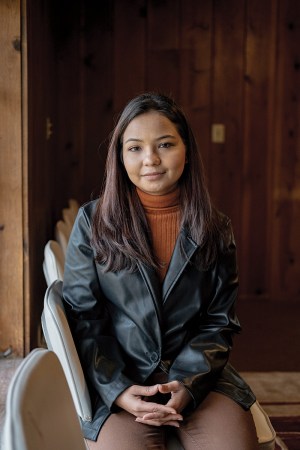 Eli Hiller for Christianity Today
Eli Hiller for Christianity TodayAn American missionary introduced him to an Asian American church involved in international ministry. The next week, the missionary found another Bhutanese refugee family and brought them to the church. Even though that family was not Christian, they attended the service and connected with Rai.
As more people from the camps—including Christians—began to resettle in the United States, Rai started a Nepali-language Sunday school at the church, which eventually branched off into its own church called Canaan Bhutanese Church. Even Bhutanese Nepali refugees from Hindu and Buddhist backgrounds would show up at the church seeking donations and support, and Rai would use the opportunity to share the gospel with them.
Gurung was 18 years old when his family resettled in Akron, Ohio, in 2014. He had been born in the camp and had never left the area, much less flown in an airplane.
“It was like an illusion,” he said. “The way we thought about America was a big city. When I got [to Akron] in January 2014, all I saw was snow. There were no tall buildings.” He remembers everything was new to him: the food, the people, the intricate systems and bureaucracy. Yet more than a thousand of Bhutanese Nepali refugees had arrived in the city before him, starting several Nepali grocery stores.
Most of the refugees worked long hours at warehouses, farms, or other low-paying jobs because they couldn’t speak English and didn’t have much education. Gurung’s first job was picking corn, for which he was paid $60 for each filled container. Yet even then, he had a vision to plant a daughter church of Ray of Hope International, the church he’d attended in the camps.
Manoj Shrestha, pastor of Nepal Baptist Church of Baltimore, noted that the difficulties Bhutanese Nepali refugees faced led to a more committed and devout faith than other Nepali immigrants. “Many lost everything they had,” Shrestha said. “And in that hardship when they heard the gospel, it was very good news for them, so they believed. … I think God was preparing them there so when they moved, everywhere they move, there’s a church. They have a zeal to share the gospel, they want to plant churches, they want to become missionaries.”
When Shrestha first came to the United States from Kathmandu in 2000 to pursue a master of theology degree at Princeton Theological Seminary, there were no Nepali churches in the country and only a few believers among the Nepali diaspora. After his program ended, he returned to Nepal to head a Bible college.
In 2008, Shrestha returned to Princeton to pursue a PhD in homiletics, which coincided with the initial influx of Bhutanese Nepali refugees into America. He was surprised to find a large number of Christians in the refugee community who were starting new churches in the cities where they settled.
Many of these Bhutanese Nepali pastors had little to no theological training and only a very basic understanding of the faith. So Shrestha, working with the Bhutanese Nepalese Churches of America, started holding trainings and seminars about everything from how to preach a sermon to surveys of the Old and New Testaments. In recent years, since the pandemic, he’s been able to expand the reach of his Bible teaching for Bhutanese Nepali pastors through daily Zoom classes.
What the Bhutanese Nepali Christians lacked in knowledge, they made up for in passion. To plant a church, Gurung and another Bhutanese Nepali friend, Sital Ghimire, would walk a couple hours each day to preach the gospel and hand out gospel tracts on the streets. When several young people came to faith, he would take them under his wing and disciple them. He also gathered Bhutanese Nepali believers in the city to minister to the homeless, providing them with necessities, praying with them, and handing out tracts.
After a year, about four new families had come to Christ and were baptized. A local church near Akron, Chapel Hill Church, let Ray of Hope International meet in their church building for free. With the help of Gurung’s Christian mentors from the camps, their numbers grew and the ministry of Ray of Hope spread. Today, the church has 23 church plants in the United States and 200 churches around the world.
Monger relocated his church from the camp to Austin, Texas, where he resettled in 2009. International Restoration Church now serves not only Bhutanese Nepali refugees, but also other refugees from Africa and Southeast Asia, as well as Nepali international students. Currently, two students are staying in Monger’s home. The church bought a piece of land on which they plan to build a permanent home and are praying for God to provide the funding.
Monger said he never changed the church’s mission even after coming to the United States. “Our doctrine is [to be] full of divine love,” he said. “Only Jesus can bring restoration.”
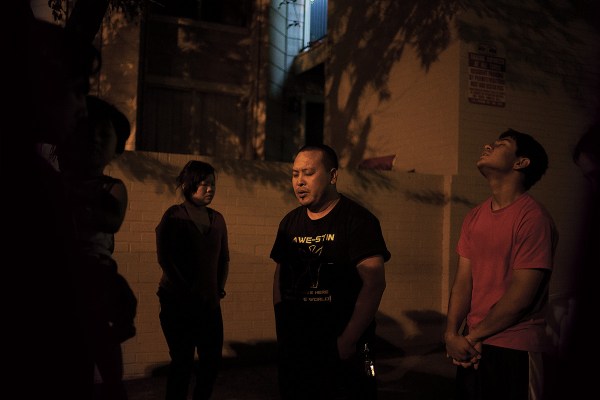 Mary Kang
Mary KangBaraily’s experience and conversion in the refugee camp encouraged her to become a missionary, traveling to Africa, Europe, and around the United States to tell people about Jesus. When Baraily came to America in 2012, she was resettled in Atlanta, where she attended high school. She sensed God calling her into ministry and, after graduation, she moved to Columbus, where she worked for a few years to support her family before attending Valor Christian College.
She has returned to Nepal to do mission work and has also ministered to refugees in the Abaco islands in the Bahamas. Her own experience growing up in a refugee camp helps her relate to those in similar situations: She knows firsthand the lack that they face, yet she also remembers the joy she felt as a child when visitors came to the camps bearing small gifts like chocolate or pencils and playing games with her.
“That’s my story,” she said. “God touched my heart on my first missions trip and I’m like, ‘Yes, I want to be a missionary.’”
Several years ago, Lumjel also had a chance to return to Nepal for the first time. It was the fulfillment of a vision he’d seen the night of his dramatic conversion. In a dream, he saw himself evangelizing at a traffic circle in Damak, a city in eastern Nepal. At the time he woke up confused, only to have the same vision again after he fell back asleep.
But then, in 2018, he stood in that exact location with a local Nepali church, passing out calendars with Bible verses printed on them in order to share the gospel. Since then, Lumjel has been back to Nepal two more times.
Most Bhutanese Nepali churches don’t have the funds to pay their pastors or buy their own buildings; their congregants typically make just enough money to get by. So churches often borrow or rent meeting spaces in American church buildings. At times, sharing space has led to conflicts between them and the host churches, including over noise levels, miscommunication, exceeding time limits, or wear and tear on the building.
Yet sharing buildings has also led to myriad blessings. When Rai’s Canaan Bhutanese Church relocated to Harrisburg, Pennsylvania, in 2020, he began praying for a place for his church to meet. Meanwhile, Lynn Shertzer, head pastor at Slate Hill Mennonite Church, said a Bhutanese Nepali student in his leadership training program approached him and shared that his friend was interested in using the church facilities.
At first Shertzer was resistant: It was the middle of the COVID-19 pandemic and it didn’t seem like the right time to add another group to their church. But then he felt God ask him, “Why not?” So he met with Rai, heard the church’s story, and after discussing it with church leadership, decided to let them meet in the church free of charge. “The church building is not ours, but our Lord’s,” he said. “What better way to use the facility?”
Since then, Canaan Bhutanese Church has been a great blessing to Slate Hill, Shertzer said. It’s brought a new vitality to the host congregation, as they saw Canaan grow from 18 to 46 families. As Shertzer’s congregation watched the Bhutanese Nepali believers meeting the needs of their community, building friendships, and evangelizing, Shertzer said his congregation began to say, “We should do this ourselves.”
Church members are also now more aware of the Bhutanese Nepalis living in their community and better understand how to relate to their neighbors.
Three or four times a year, Slate Hill Mennonite Church and Canaan Bhutanese Church hold joint services along with a Laotian church that also meets in Slate Hill’s building. As believers of different backgrounds break bread and worship together, Shertzer said, it has helped his church see that “the kingdom of God is bigger than just white people.” At Slate Hill’s Christmas Eve service, the three congregations gathered to perform dances and sing songs in different languages. Bible passages were shown on the screen in Nepali, Laotian, and English.
Christy Staats, who helped train Akron churches in cross-cultural ministry, said that while working with the Bhutanese Nepali community, she’s seen a boldness for evangelism that she’s rarely experienced in the US church.
“There is a tendency for Americans to jump into refugee work thinking we are the hero, and we need to curb that,” Staats said. “What’s really deep in my conviction is the leadership and capability that the Bhutanese Nepali refugees display. I need to learn from them.”
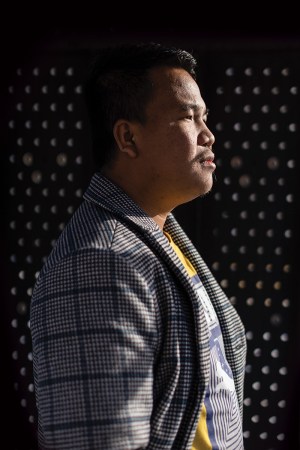 Kathryn Gamble for Christianity Today
Kathryn Gamble for Christianity TodayShe remembers one time Gurung (then around 19 years old) and Ghimire asked if her church would let them hold a Bhutanese Nepali youth conference. The church agreed, and she was impressed to see them quickly organize the conference with speakers, worship bands, and food. As they passed word of the event through the nationwide network of Bhutanese Nepali Christians, about 400 young people from as far away as Maine and Minnesota drove to Akron to attend.
“We brought revival within American Christian groups,” Gurung said. While he sees American churches with large buildings but only a handful of older people worshiping, “our church is growing every time. We are reaching out within our community, and we are making a difference within American Christians.”
He attributes some of this to the different way that they do ministry: Rather than relying on large church budgets to create programs and events, Bhutanese Nepali churches turn to simpler methods. Gurung still goes out walking around the neighborhood to share the gospel. He prints tracts in English and Nepali and hands them out to whomever he meets. He’s even shared the gospel with refugees from the Congo, Iraq, and Pakistan.
Over in Columbus, about 30 Bhutanese Nepali churches joined Lumjel at Emmanuel Fellowship Church over last Labor Day weekend to evangelize in the city. The group spread out to places where Nepalis congregate, including Saraga International Grocery, Nepali stores, and apartment buildings. They knocked on the doors of acquaintances as well as strangers, both Nepali and not.
“What God gives us, we gospel,” Lumjel said. In his car, he keeps a stack of tracts that he gives out as the opportunity arises.
When asked why he thinks so many Bhutanese Nepali refugees accepted Christ, Lumjel responded: “God always loves weak people.
“As a refugee, we didn’t have any hope, we didn’t have any good things, we didn’t have anything. But God opens the door for us and he brings us here to the US. … [Now] we all have our citizenship in heaven.”
Angela Lu Fulton is CT’s Southeast Asia editor.

